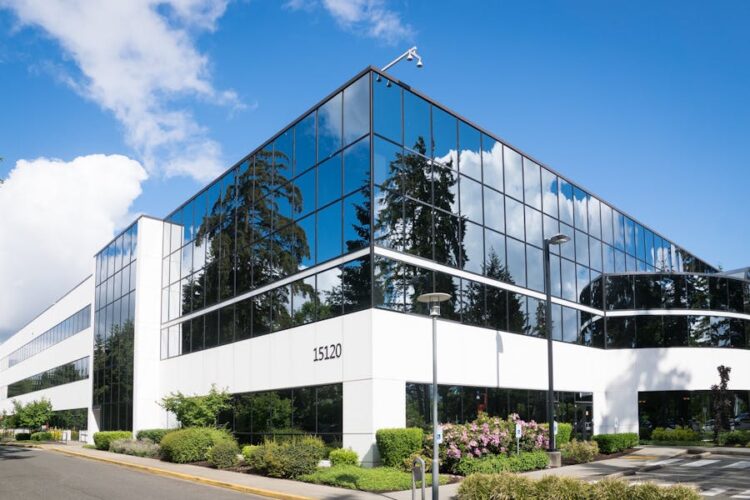The construction industry is one of the largest sectors that support the U.S. economy, with over 700,000 businesses employing millions of people. Starting a construction company startup might be quite profitable, especially by combining your knowledge with entrepreneurship. In any case, navigating the legal and licensing requirements will be critical to building a successful business that is compliant with these standards. This outline contains key steps to ensure that your construction company startup meets all the regulatory standards.
1. Understanding Business Structures for Your Construction Company
The first step in starting a business in Ohio, particularly a construction company startup, is selecting the right business entity. Many business owners prefer forming a Limited Liability Company (LLC) because it offers:
- Personal asset protection from business liabilities.
- Flexibility in management and taxation.
- Simplified compliance requirements compared to corporations.
Other structures, such as corporations or sole proprietorships, are also options. However, an LLC often strikes the ideal balance between liability protection and operational simplicity, making it a popular choice for construction businesses.
2. Register Your Construction Company
Upon deciding the structure, registering your construction startup with the state becomes imperative. For LLCs, the procedure entails:
- Filing Articles of Organization.
- Appointing a registered agent to receive legal documents.
Registration makes your business a separate legal entity, thereby keeping personal assets at potential lawsuits or business debts protected.
3. Obtain an Employer Identification Number (EIN)
EIN stands for Employer Identification Number. It is a nine-digit number, which is given by the IRS to identify your business for purposes of taxes. Most states require the identification to file taxes, hire employees, or even open a business bank account. It is like a social security number for your business.
An EIN is a method of lending your business more credibility with clients and makes management of finances easier.
4. Secure Necessary Licenses and Permits
A crucial aspect of launching your construction company startup is obtaining the required licenses and permits. These vary by state, county, and city and may include:
- Contractor’s licenses.
- Business operation permits.
- Zoning and environmental compliance certifications.
Failure to acquire the necessary permits can lead to fines, penalties, or even business closure. Tools like MyCorporation’s Business License Compliance package can simplify this process by identifying the specific requirements for your business and location.
5. Invest in Insurance
Insurance is non-negotiable for a construction company startup, providing protection against liabilities and potential risks. Essential policies include:
- General liability insurance to cover damage to client property.
- Workers’ compensation insurance for employee injuries.
- Equipment insurance to protect costly tools and machinery.
Meet with an insurance professional to customize coverage for your business needs.
6. Open a Business Bank Account
To separate personal and business finances, open a dedicated bank account for your construction company startup. This step helps:
- Enhance credibility by allowing payments under your business name.
- Protect personal assets by maintaining the legal separation of finances.
- Build a credit history for future loans or investments.
Many banks require an EIN to open a business account, so ensure you’ve obtained one beforehand.
7. Comply with Safety and Employment Laws
Construction businesses must follow strict safety regulations under laws such as OSHA (Occupational Safety and Health Administration). Additionally, you’ll need to comply with:
- Hiring practices, including background checks and proper classification of employees or subcontractors.
- Payroll regulations and tax filing requirements.
Adhering to these laws not only keeps your business compliant but also helps build a strong reputation for professionalism.
8. Develop a Comprehensive Business Plan
While not a legal requirement, a solid business plan acts as a roadmap for your construction company startup. Include details like:
- Services offered.
- Target market and competition analysis.
- Startup costs and financial projections.
A well-crafted business plan is invaluable when seeking loans or attracting investors.
9. Trademark Your Business Name
It ensures the exclusive right to use your business name. Trademark search must be performed to determine availability and file a trademark application to prevent competitors from using it.
10. Stay Up to Date on Compliance
Running a startup construction company means continuous compliance with the legal and regulatory aspects such as:
- Renewing licenses and permits whenever required.
- Filing the yearly report for your business entity.
- Keeping proper records for taxes as well as legal perusal.
Regular compliance checking can help avoid penalties and show that you mean business.
Conclusion
Starting a construction company involves proper strategic planning, legal and licensing regulations, and laying a firm foundation by choosing the right business structure, obtaining the necessary permits, and insuring the firm’s compliance. With this in mind and a guarantee of quality services, the construction firm can thrive in a competitive market.
You could also consider getting business tools from MyCorporation to ensure that your systems meet customer expectations and regulatory standards. A great construction firm starts with great law and continues only with great buildings.










